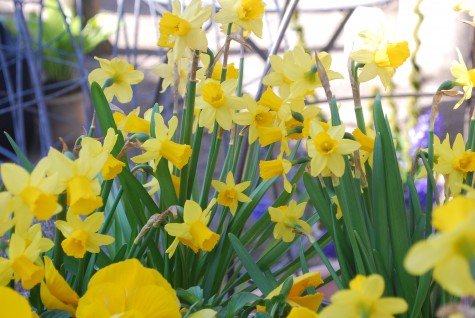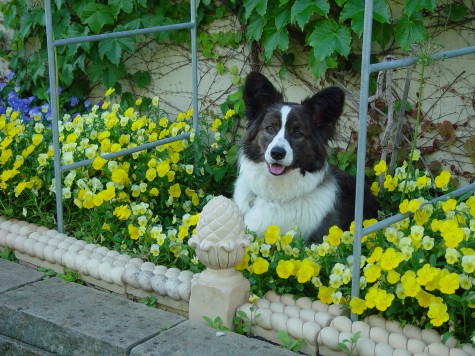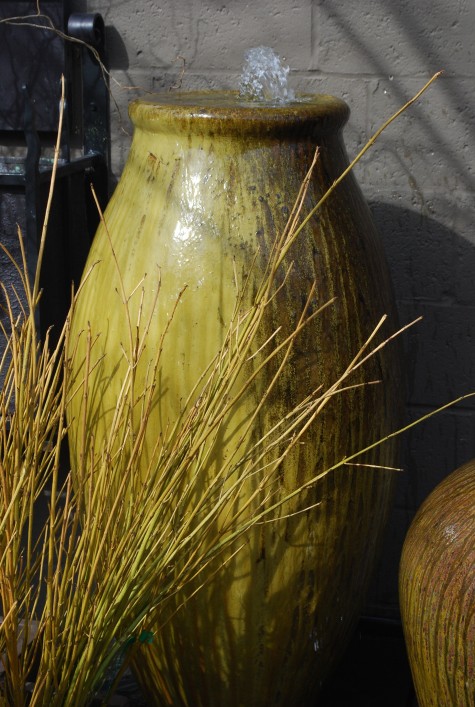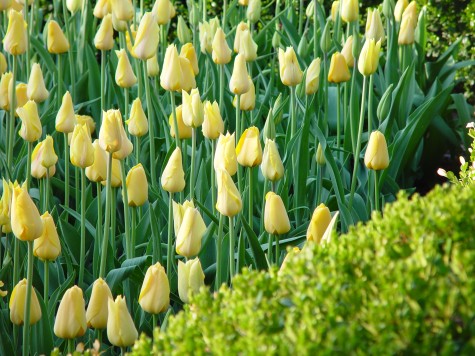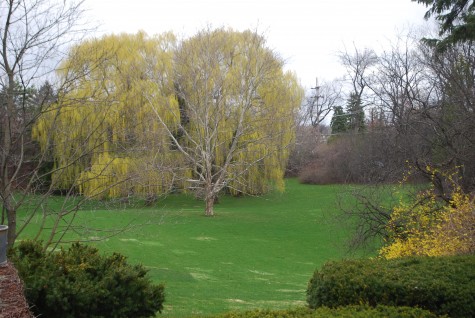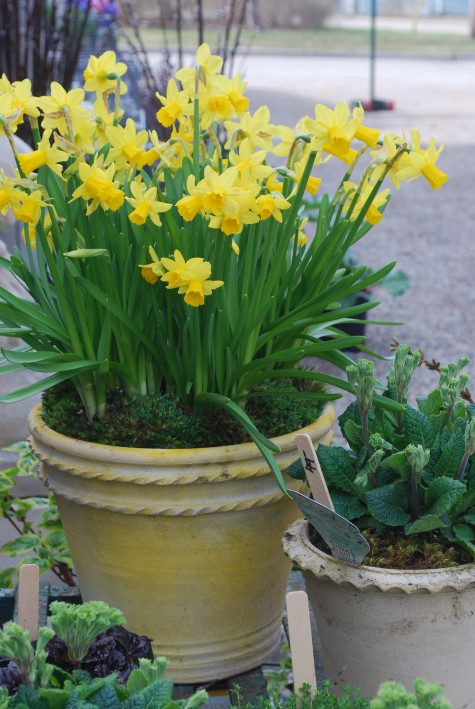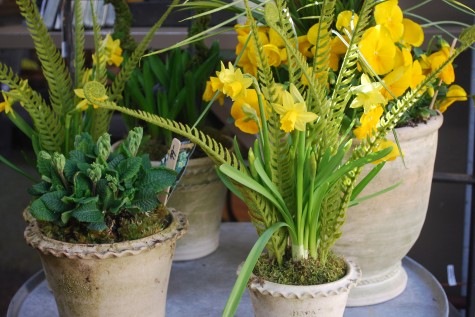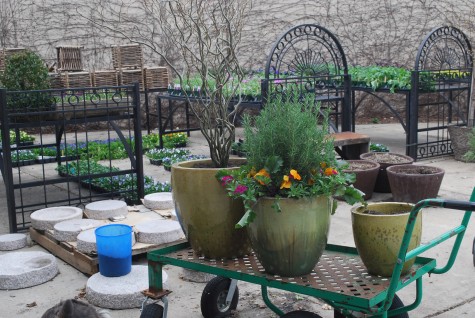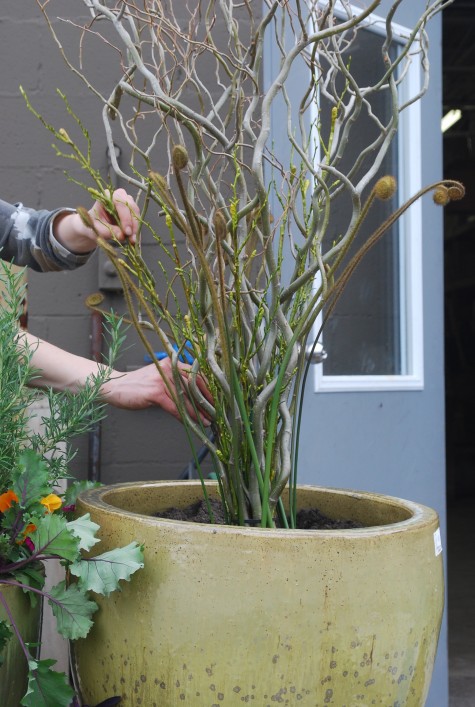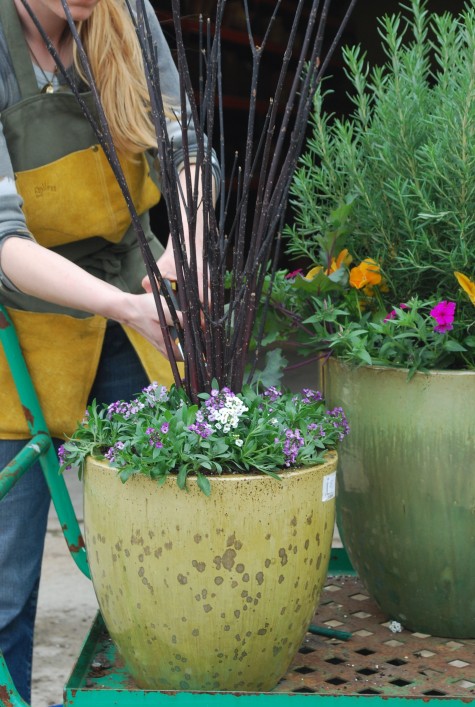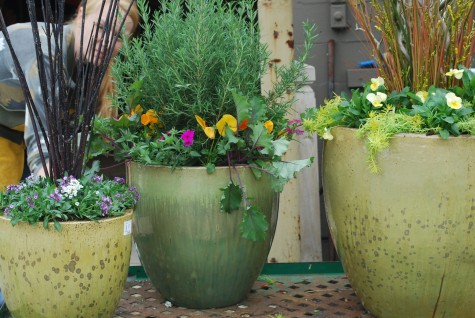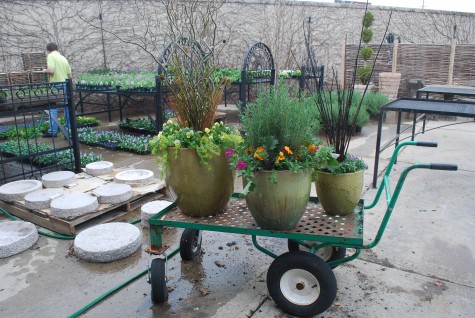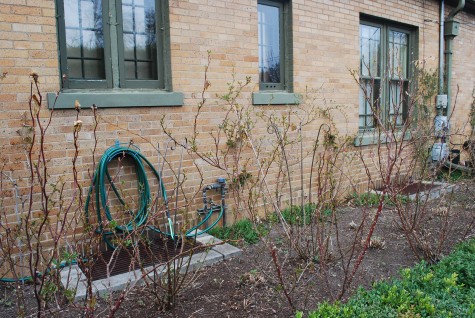 A northern garden in April-yikes. My rose bed actually looks better than usual for this time of year. I have leaves on the climbing roses well in advance of their usual time. A warm March and a south wall has tricked them into thinking it is spring. The boltonia is up next to the wall-but little sign of the Japanese anemone or asparagus yet. I have great views of the hose, the gas meter, the window wells, and the dirt.
A northern garden in April-yikes. My rose bed actually looks better than usual for this time of year. I have leaves on the climbing roses well in advance of their usual time. A warm March and a south wall has tricked them into thinking it is spring. The boltonia is up next to the wall-but little sign of the Japanese anemone or asparagus yet. I have great views of the hose, the gas meter, the window wells, and the dirt.
 The gas and electric meters do not fall into the realm of garden ornament, but my garden has them, like most gardens. If you do a great job of covering them up, your bills get estimated; why do they always estimate on the so high side? The wires-who knows what these are. As T.S. Eliot penned in his poem “The Wasteland”, “April is the cruellest month”. Though he by no means in referring to my garden, the phrase is perfectly appropriate. My garden, in April, looks terrible.
The gas and electric meters do not fall into the realm of garden ornament, but my garden has them, like most gardens. If you do a great job of covering them up, your bills get estimated; why do they always estimate on the so high side? The wires-who knows what these are. As T.S. Eliot penned in his poem “The Wasteland”, “April is the cruellest month”. Though he by no means in referring to my garden, the phrase is perfectly appropriate. My garden, in April, looks terrible.
 The herniaria under the bench-a yellow brown. Its unclear what is dead, what is alive, and what will be restored by warmer weather. It all looks dead to me today. OK, I might be overreacting. It is however, abundantly clear, no garden parties should be scheduled in the foreseeable future. Were I able to wave a wand, or put lottery winnings to righting this, or lottery winnings to an April retreat/ cottage anywhere else but right here, I would do so. But this is where I live all year round, and this is what there is to report.
The herniaria under the bench-a yellow brown. Its unclear what is dead, what is alive, and what will be restored by warmer weather. It all looks dead to me today. OK, I might be overreacting. It is however, abundantly clear, no garden parties should be scheduled in the foreseeable future. Were I able to wave a wand, or put lottery winnings to righting this, or lottery winnings to an April retreat/ cottage anywhere else but right here, I would do so. But this is where I live all year round, and this is what there is to report.
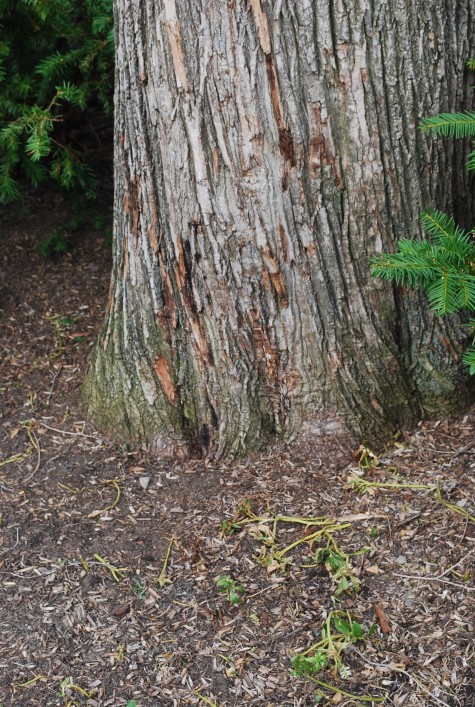 My giant maple-how forgiving it is given Milo’s squirrel rants. He leaps up on this trunk all winter long, thinking should he work hard enough, he will be able to climb up and destroy that squirrel. Sections of bark are ripped off-horrifying. The pachysandra at ground level, ground off. A few intermittent broken and intermittent stems are all that has survived his daily winter onslaught. Not pretty.
My giant maple-how forgiving it is given Milo’s squirrel rants. He leaps up on this trunk all winter long, thinking should he work hard enough, he will be able to climb up and destroy that squirrel. Sections of bark are ripped off-horrifying. The pachysandra at ground level, ground off. A few intermittent broken and intermittent stems are all that has survived his daily winter onslaught. Not pretty.
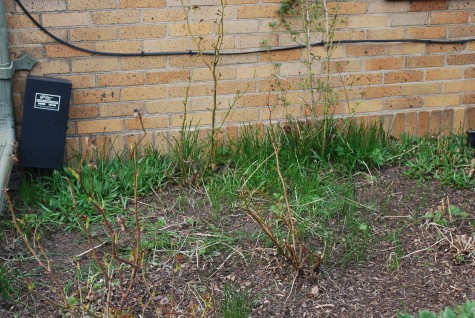 What is this grassy weed that comes on so strong in the spring? Every year it spreads. By the time I am able to get in there, and weed it out, it disappears. This weed has the amazing ability to make my rose garden look littered before it ever wakes up.
What is this grassy weed that comes on so strong in the spring? Every year it spreads. By the time I am able to get in there, and weed it out, it disappears. This weed has the amazing ability to make my rose garden look littered before it ever wakes up.
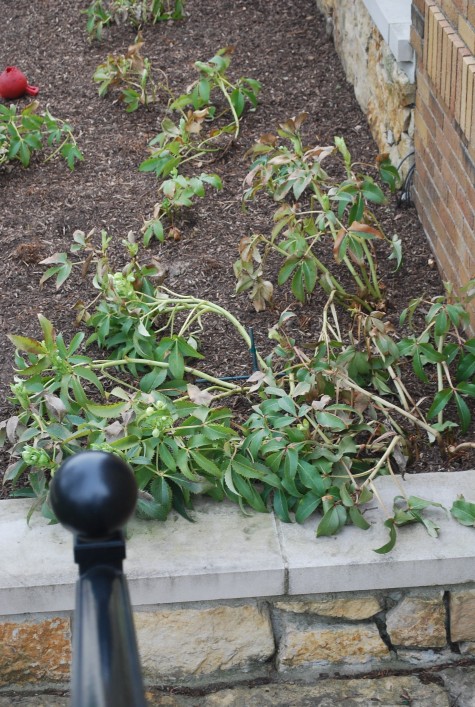 My Helleborus Angustifolius-every blooming stalk has been smashed to the ground by the snow. I am sure once those green flowers appear, I will feel better-but today, I hate the entire winter burned mess. Staking flowering hellebore stalks in April? I have given five years to this scheme; this April, I am ready to move on to plan B.
My Helleborus Angustifolius-every blooming stalk has been smashed to the ground by the snow. I am sure once those green flowers appear, I will feel better-but today, I hate the entire winter burned mess. Staking flowering hellebore stalks in April? I have given five years to this scheme; this April, I am ready to move on to plan B.
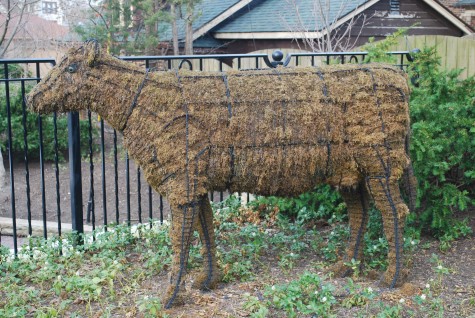 Lady Miss Bunny-I do so love this sculpture Rob gave me for my birthday some years ago. This April-does the moss not need replacing? So many bones are showing-I am wincing. The moss needs replacing. Howard likes to hide under her when it is snowing-witness the pachysandra dead spots. Dead spots-I am looking at them everywhere.
Lady Miss Bunny-I do so love this sculpture Rob gave me for my birthday some years ago. This April-does the moss not need replacing? So many bones are showing-I am wincing. The moss needs replacing. Howard likes to hide under her when it is snowing-witness the pachysandra dead spots. Dead spots-I am looking at them everywhere.
 My twig things-thank heavens they are sprouting. This very old Palabin lilac standard has been grey and grim for quite some time. I am inordinately pleased for the green haze I am seeing. The weather was very warm today-I could weep given that my garden has not responded immediately. Who can believe I would even publish pictures of this mess of a garden-but day to day-any landscape is very much about the day to day. It is a good time to assess, and plan.
My twig things-thank heavens they are sprouting. This very old Palabin lilac standard has been grey and grim for quite some time. I am inordinately pleased for the green haze I am seeing. The weather was very warm today-I could weep given that my garden has not responded immediately. Who can believe I would even publish pictures of this mess of a garden-but day to day-any landscape is very much about the day to day. It is a good time to assess, and plan.
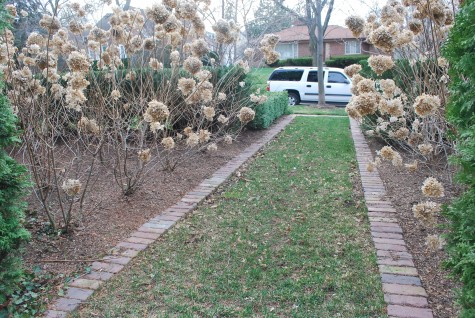
The grass will get greener, yes? I will prune the winter away from the Limelight hydrangeas. Better days are to come, yes?
